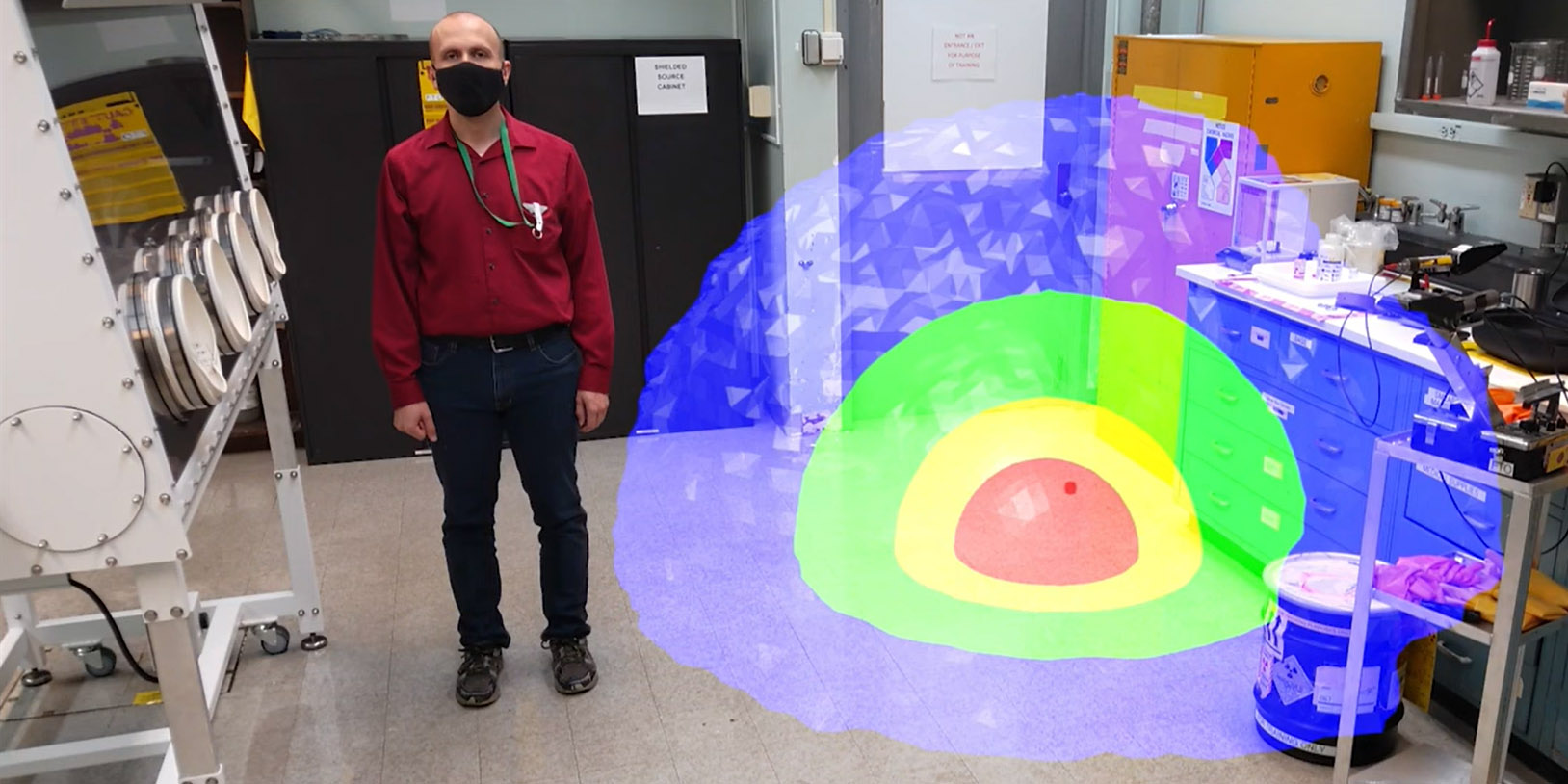 US company Teletrix has licensed technology developed by researchers at Oak Ridge National Laboratory to help with the training of radiological workers and radiological control technicians. The technology uses augmented reality (AR) to create accurate visual representations of ionising radiation.
US company Teletrix has licensed technology developed by researchers at Oak Ridge National Laboratory to help with the training of radiological workers and radiological control technicians. The technology uses augmented reality (AR) to create accurate visual representations of ionising radiation.
ORNL developed its Virtual Interaction With Physics-Enhanced Reality (VIPER) using simulated radiation data and a gaming platform. The technology divides a physical space into cubes, each with a volumetric value of ionising radiation by dose. The data is then used to create a 3D image of gradient contours overlaid on a real-world view through an AR headset. This enables anyone wearing the headset to move through a physical space with visual awareness of the contours. The device calculates simulated, real-time exposure based on their movements.
Michael Smith, a nuclear space systems engineer at ORNL and a member of the development team explained: “We combined physics-based data with a gaming interface that provides a visual platform to make something invisible look and feel real – we took science and cinematography and brought them together.”
He said is a superior and safer solution for training with ionising radiation. “Our team was at the right place at the right time to develop this technology. There was a synergy of hardware and software maturity coupled with an idea that’s been around a long time – the need to see ionising radiation.”
He continued: “Just by having a general impression of the spatial relationship of your body in a given radiation environment, you can decrease your overall dose based on really fundamental behavioural changes. We can't see ionising radiation, so you just walk right through it. But once you have seen what the radiation in your working environment looks like, you can't unsee it. AR provides a means to train people to have a better visceral understanding of how ionising radiation behaves.”
ORNL envisioned three applications for the technology:
- Radiological survey – For routine radiological surveys by a radiological control technician when the radiation source location is known, both to simulate real-time detector measurements and to record data from actual occupational use by personnel regularly engaged in radiation surveys.
- Radiation source search – For cases in which the radiation source location is unknown, to take real-time detector data, map the location of personnel, and rapidly communicate visual and spatial radiation data to individuals or to groups of radiological personnel in search of an unknown radiation source.
- Radiological workflow – For training radiological workers who are in similar radiation environments daily but may have limited knowledge about the spatial characteristics of the hazards of known sources.
Teletrix produces products that are used by utilities, emergency response organisations, and government agencies. One of the products is VIZRAD, a virtual reality software system that simulates contamination on individuals and workspaces and trains a user to properly scan someone with a detector by providing objective feedback on technique.
“When I put the AR glasses on, it was obvious that ORNL’s technology and Teletrix’s tools were a great fit,” said Jason O’Connell, Teletrix sales & business development manager. “Through the headset and the AR technology, we have the ability to track a person’s exact location within a room and inject source information into the room. . . Having much more realistic readings on your instruments leads to better-prepared employees, better prepared trainees, fewer incidents – this technology will help make people in this industry safer.”
ORNL experimentally validated the method of coupling AR technologies with accurate radiation measurements through a study using caesium-137 at its Nuclear Radiation Protection Division demonstration facility. Performance data collected from about 40 participants showed “statistically significant behavioural changes after minimal training with AR representations of radiation fields.”
“In the 1940s, ORNL made pioneering contributions across numerous scientific fields, including radiation protection,” said Susan Hubbard, ORNL deputy for science & technology. “In our 80th year as an institution, we continue to provide leadership in this area. This technology will allow radiological workers to better understand the environments they work in, enabling a safer and more informed workforce.”
Image: The AR technology transforms how workers visualise radiation (courtesy of ORNL)






